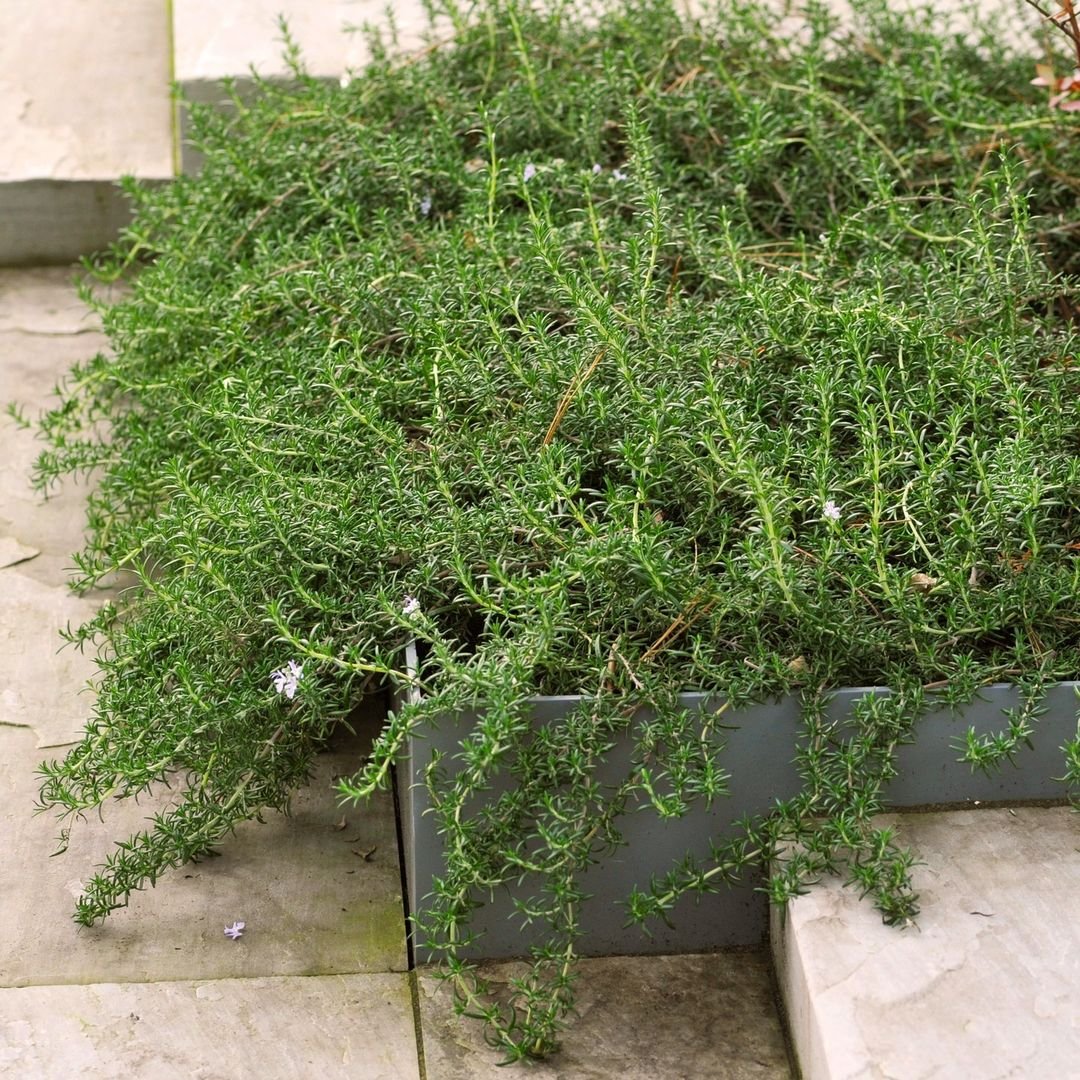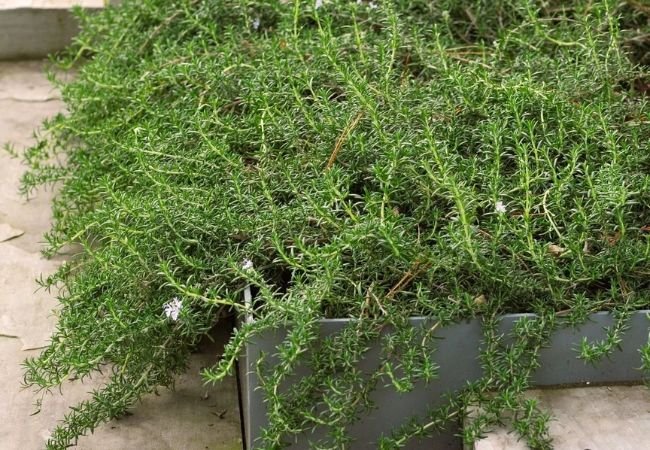Learn how to grow and care for creeping rosemary, a versatile and low-growing herb. Discover planting tips, maintenance advice and how to use this aromatic plant in your garden.
Creeping rosemary (Rosmarinus officinalis ‘Prostratus’) is a delightful, low-growing variety of the popular herb that offers both culinary and ornamental value. With its trailing habit and fragrant foliage, this Mediterranean native is perfect for rock gardens, hanging baskets, or as a ground cover. In this guide, we’ll explore how to grow and care for creeping rosemary, along with creative ways to use it in your garden.
Here is a chart with detailed information on Creeping Rosemary:
| Category | Information |
|---|---|
| Botanical Name | Rosmarinus officinalis ‘Prostratus’ |
| Common Name | Creeping Rosemary |
| Plant Type | Evergreen Perennial Herb |
| Hardiness Zone | 8-10 (Can be grown in containers in cooler zones) |
| Sun Exposure | Full Sun |
| Soil Type | Well-drained, Sandy or Loamy |
| Watering | Low to Moderate, Drought Tolerant Once Established |
| Growth Habit | Low-Growing, Spreading, Trailing |
| Height/Spread | 6-12 inches tall / 2-3 feet wide |
| Special Features | Aromatic Foliage, Edible Leaves, Drought Tolerant, Attracts Pollinators, Excellent Groundcover |
What is Creeping Rosemary?

Creeping rosemary is a prostrate form of the common rosemary plant. It shares the same aromatic, needle-like leaves and edible properties as its upright cousins, but with a spreading growth habit.
Here are some key features:
- Height: Typically grows 6-12 inches tall
- Spread: Can reach 2-3 feet wide
- Flowers: Small, blue to pale lavender blooms in spring and summer
- Foliage: Evergreen, needle-like leaves with a strong, pine-like scent
- USDA Hardiness Zones: 7-10
How to Grow Creeping Rosemary
Planting
- Timing: Plant in spring after the last frost or in early fall.
- Location: Choose a spot with full sun and well-draining soil.
- Soil preparation: Mix in some sand or gravel to improve drainage if needed.
- Spacing: Plant 2-3 feet apart to allow for spreading.
Propagation
Creeping rosemary can be propagated through:
- Cuttings: Take 4-6 inch cuttings in late spring or early summer.
- Layering: Pin down a stem to the soil and it will root over time.
- Division: Carefully divide established plants in spring.
Caring for Creeping Rosemary
Watering
- Water deeply but infrequently, allowing soil to dry between waterings.
- Avoid overwatering, as rosemary is prone to root rot.
Fertilizing
- Rosemary generally doesn’t need much fertilizer.
- If desired, apply a balanced, slow-release fertilizer in spring.
Pruning
- Prune lightly after flowering to maintain shape.
- Avoid cutting into old wood, as it may not regrow.
Winter Care
- In colder zones, protect with mulch or move potted plants indoors.
- Ensure good air circulation to prevent fungal issues.
Common Problems and Solutions
- Root rot: Ensure well-draining soil and avoid overwatering.
- Powdery mildew: Improve air circulation and avoid overhead watering.
- Spider mites: Rinse foliage regularly and use insecticidal soap if needed.
Creative Uses for Creeping Rosemary
- Ground cover: Use in rock gardens or along pathways.
- Hanging baskets: Let it trail over the edges for a cascading effect.
- Erosion control: Plant on slopes to help stabilize soil.
- Culinary herb: Use fresh or dried in cooking, just like upright rosemary.
- Pollinator attractor: The flowers attract bees and butterflies.
- Companion planting: Grow near carrots, beans, or cabbage to deter pests.
Harvesting and Using Creeping Rosemary
- Harvest sprigs as needed throughout the growing season.
- Use fresh in cooking or dry for later use.
- Add to olive oil or vinegar for flavored infusions.
- Use in homemade soap or potpourri for its fragrance.
Creeping rosemary is a versatile and low-maintenance herb that can add both beauty and functionality to your garden. With its aromatic foliage, pretty flowers, and trailing habit, it’s an excellent choice for gardeners looking to add interest to their landscapes. By following these growing and care tips, you’ll be well on your way to enjoying this delightful herb in your own garden.
Whether you’re using it as a ground cover, in hanging baskets, or as a culinary herb, creeping rosemary is sure to be a valuable addition to your garden. Its drought tolerance and pest-resistant qualities make it an easy-care plant, while its year-round interest ensures it will be a long-lasting feature in your outdoor space.
Learn more about companion planting with herbs
Discover other low-growing herbs for your garden
Happy gardening, and enjoy the fragrant beauty of your creeping rosemary!
For more gardening tips and plant care guides, visit https://usagardenweb.com








Leave a Reply